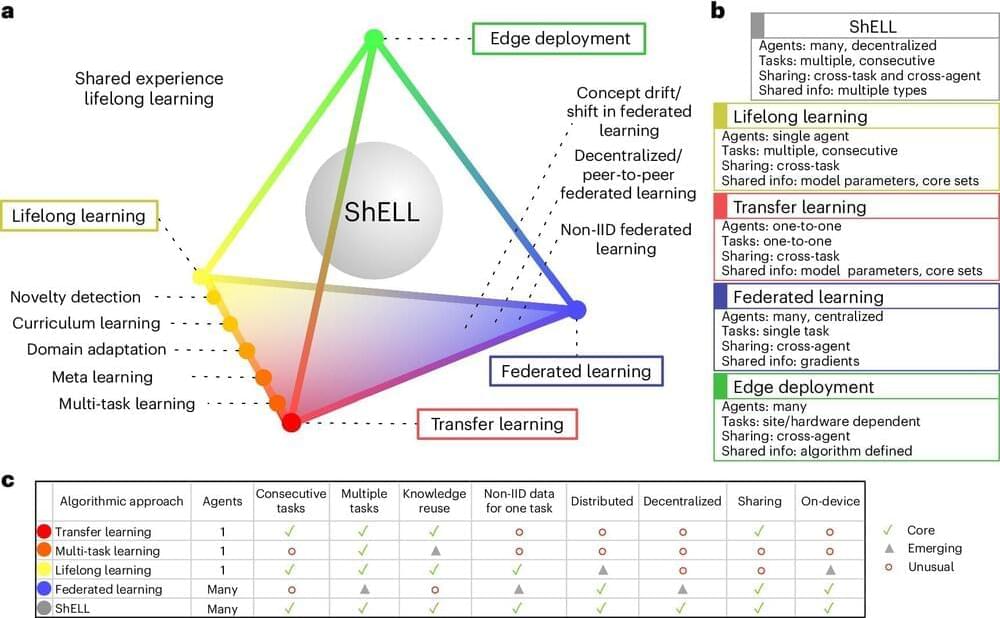Leading computer scientists from around the world have shared their vision for the future of artificial intelligence—and it resembles the capabilities of Star Trek character “The Borg.”



The big picture: Sand batteries might not be as efficient for generating electricity as they are for heating, but they could still have a huge impact on climate emissions — about 9% of the heat needed for buildings and industry comes from district heating systems, and 90% of those rely on fossil fuels.
We could then supplement the sand batteries with another alternative form of storage, such as flow batteries, to generate electricity from renewables year-round — completing the transition to a clean energy future.

“Gigantic aluminum spiders” might sound like the stuff of nightmares or an antagonist in an anime series. However, for one Norwegian company, they could be the future of the wind energy industry.
WindSpider, a tech company that focuses on onshore and offshore wind turbines, has developed a new self-erecting crane system that could revolutionize the way turbines are built.
The WindSpider crane uses the tower of the wind turbine itself as part of the crane while performing installation, maintenance, repowering, and decommissioning of bottom-fixed and floating offshore wind turbines. This allows operations to be performed on floating turbines on site and at sea and for a lifting capacity that can be scaled to over 1,500 tons with no height limitations.
We can test the cognitive abilities of octopuses in the lab. In our EthoS laboratory, we are currently working on the memory and future planning abilities of the common octopus. They are complex animals to study, because of their astonishing abilities.
Their incredible strength allows them to easily destroy our lab tools: be careful with underwater cameras, they can open the waterproof box to drown them! And because octopuses are boneless, they can easily escape their tanks through the smallest of openings. They are also extremely curious and will spend their time catching hands, nets or any other object introduced to their tank. From there, it is up to them to decide when to release their catch.
The opening of jars, while impressive and often used to illustrate octopus intelligence, is not their most remarkable ability. This is mostly a matter of dexterity and gripping, and octopuses are quite slow when executing this task: even when over-trained, an octopus always takes more than a minute to open a jar. A better example of their impressive intelligence is their ability to manipulate an L-shaped object so it can pass through a small square opening in a wall.


Serina Jain, who is a student at San Francisco University High School, said in a statement, “This experience further propelled my fascination with the subject of astronomy, specifically in regard to exoplanetary science.”
How can high school contribute to finding exoplanets? The answer is easy and effective, as a recent study published in The Astronomical Journal announced the confirmation of exoplanet TIC 139,270,665 b with the help of an enthusiastic group of high school students who are part of the Unistellar Citizen Science Network, which is a worldwide collaboration of citizen astronomers. This discovery holds the potential to not only improve the hunt for exoplanets, but also improve the chances of citizen scientists using public data to contribute to finding exoplanets, as well.
The confirmation of TIC 139,270,665 b, which is located approximately 483 light-years from Earth, was made through a collaboration between SETI Institute Affiliate, Dr. Dan Peluso, and Chabot Space & Science Center’s Galaxy Explorer program, the latter of which consists of high school students. TIC 139,270,665 b was initially found using NASA’s Transiting Exoplanet Survey Satellite (TESS), where it measured one transit in front of its parent star.
However, the science team wanted to measure a second transit and utilized the Unistellar Citizen Science Network, which is a worldwide collaboration of citizen astronomers, for which the SETI Institute and Galaxy Explorer program are both members. Using Unistellar eVscopes, the Galaxy Explorer program successfully measured a second transit of TIC 139,270,665 b, determining its orbital period is approximately 1,010 days with a minimum mass just under five masses of Jupiter. The study notes how this discovery could open doors for future contributions by citizen scientists regarding exoplanet science.


Four of ChargePoint’s EV charger models can now support Tesla’s North American Charging Standard (NACS) connector cables.
The Campbell, California-based EV infrastructure company posted on Twitter that NACS cables for its Express 250 DC fast charger are now available for EV charging site owners to order. The NACS cables can be retrofitted onto existing DC fast charger models because most ChargePoint stations offer modularity.
Tesla drivers can currently use ChargePoint DC fast chargers with readily available adapters, and Tesla also sells a CCS Combo 1 adapter.